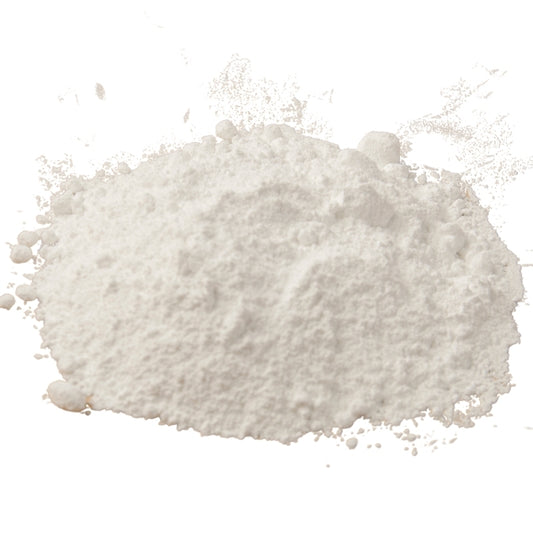
Your Ultimate Guide to Anti-Pollution Skincare
Cayla MandeanA relatively new sector has gained momentum within the skincare industry: anti-pollution skincare. These products promise to protect your skin from environmental stressors-an enticing proposition in a world grappling with severe pollution levels.
The True Impact of Pollution on the Skin
To understand the rise of anti-pollution skincare, it's important to recognise the impact pollution has on our skin. The increasingly toxic environment we live in has real, tangible consequences. Exposure to pollutants leads to the formation of free radicals-highly reactive molecules with unpaired electrons. These unstable molecules "steal" electrons from healthy skin cells, causing cellular damage and triggering oxidative stress. This process weakens the structure of the epidermal barrier and damages the dermal extracellular matrix. Simply put, pollutants contribute to skin issues such as irritation, sensitivity, inflammation, dryness, collagen breakdown, and a loss of elasticity-factors that accelerate premature aging.
While aging itself isn't the enemy, we can embrace the blessing of aging by focusing on more than just preserving our external appearance. Let's shift our attention to nurturing our overall skin health, which is intrinsically tied to our overall well-being. As the body's largest organ, the skin plays a critical role in defending against environmental stressors, regulating temperature, and supporting immune function. However, when pollution interferes with the skin's ability to perform these functions, it creates a harmful cycle of damage. This is where anti-pollution skincare comes in, providing protection and supporting the skin's natural defences.
While anti-pollution skincare products offer a shield, they do not target the root cause of the problem: the pollution itself.
The Environmental Cost of Anti-Pollution Solutions
Pollution is a global crisis, manifesting in various forms-air, water, and land. Harmful materials emitted through industrial processes, poor waste management, and chemical runoffs have affected natural ecosystems. The environmental repercussions are profound: contaminated water sources, infertile land, and toxic air that intensify respiratory illnesses, diminish our quality of life and affect our skin.
Both developed and developing nations face the harsh consequences of pollution, and it's clear that a true solution goes far beyond the creation of "miracle" products that, ironically, often exacerbate the problem by ending up in landfills and oceans once their shelf life expires, especially for those that are synthetic and not eco-friendly, re-usable or non-compostable.
Part of our journey to do our part includes our ongoing carbon offsetting efforts, which are vital in combating air pollution. By offsetting our carbon footprint, we have the opportunity to neutralise the emissions generated throughout our supply chain. Read more on how carbon offsetting can work here.
Also through responsible and local sourcing and active participation in carbon-reducing initiatives, we aim to demonstrate that wellness and beauty can coexist with sustainability. So, where does this leave you?
How to Embrace, Natural.
Africa, for example, is home to many amazing botanicals known for their healing and protective properties. While these can protect the skin against environmental damage to an extent, they should be part of a comprehensive skincare routine, supplemented by healthy lifestyle habits (e.g., a balanced diet, sufficient hydration, and sun protection).
Key Ingredients from Africa That Combat Pollution's Effects
(*Note the ingredients below are not an exhaustive list - explore our website for more)
Rooibos: Native to the Cederberg region, rooibos is packed with powerful antioxidants that neutralise free radicals. This ingredient is effective in reducing oxidative stress and inflammation, making it an excellent component for anti-pollution skincare. You can incorporate it into your skincare formulations in either water or glycerine-based herbal extract or oil maceration.
Mongongo Seed Oil: Also known as Manketti oil, comes from the nuts of the Mongongo tree. High in nutrients, rich in polyunsaturated fatty acids, especially linoleic acid (omega-6), high in vitamin E and other antioxidants and has natural UV-absorbing properties, this oil is truly wonderful for the skin.
Marula Oil: Harvested from the marula tree, this oil is rich in essential fatty acids and antioxidants. It not only hydrates but also forms a protective barrier against pollutants, supporting the skin's natural defence mechanisms.
Baobab Oil: Known as the "Tree of Life," baobab provides high levels of vitamin C, which aids in collagen production and protects skin against oxidative damage. This is vital for restoring skin's elasticity and resilience.
These ingredients, harvested sustainably, provide a potent, nature-based alternative to synthetic products. Want to get all the benefits of the ingredients listed above? Try making our DIY serum recipe below:










